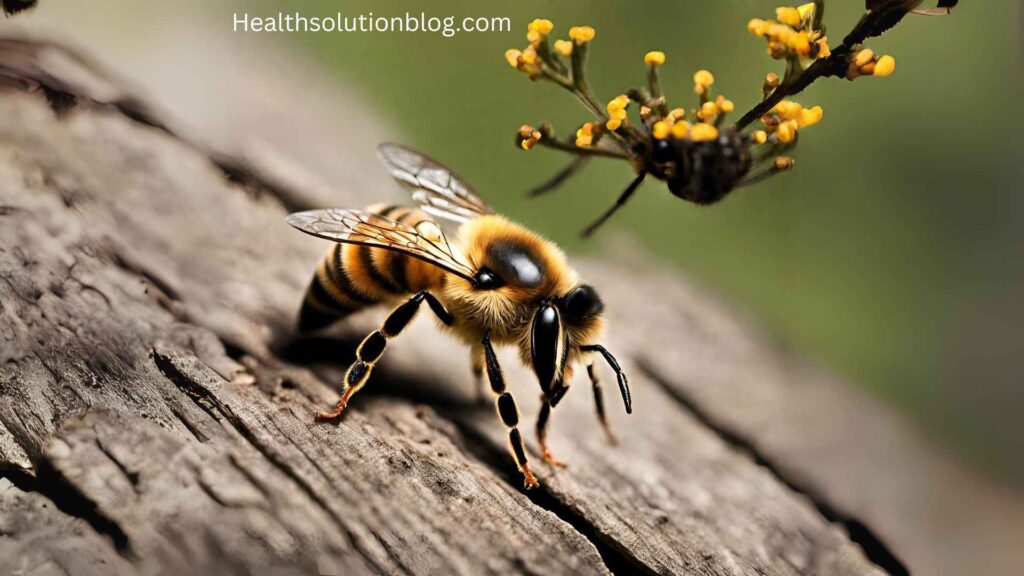
A bee sting might be an irritation for most people but it creates an increased risk to diabetics. Because diabetics are already in pain of controlling blood sugar levels and wound healing, this threat introduces problems beyond the initial pain and swelling. The reaction of an individual to a bee sting may vary because of its sensitivity and bee type.
The reaction may be localized infection like increased infection risk or it may cause allergic reactions, including life-threatening anaphylaxis. Moreover, the blood sugar level may fluctuate due to stress and inflammation caused by sting, or even the potential insulin-like effects of the venom itself.
Visit Best Insulin Travel Case: Essential Features, Top 8 Amazon Picks, and Expert Insights to protect your insulin.
1. Understanding Diabetic Reactions to Bee Stings

As already explained the reaction to bee stings may vary depending on the individual sensitivity and blood sugar levels. Following is the breakdown of potential complications due to bee stings:
1.1 Increased Infection Risk:
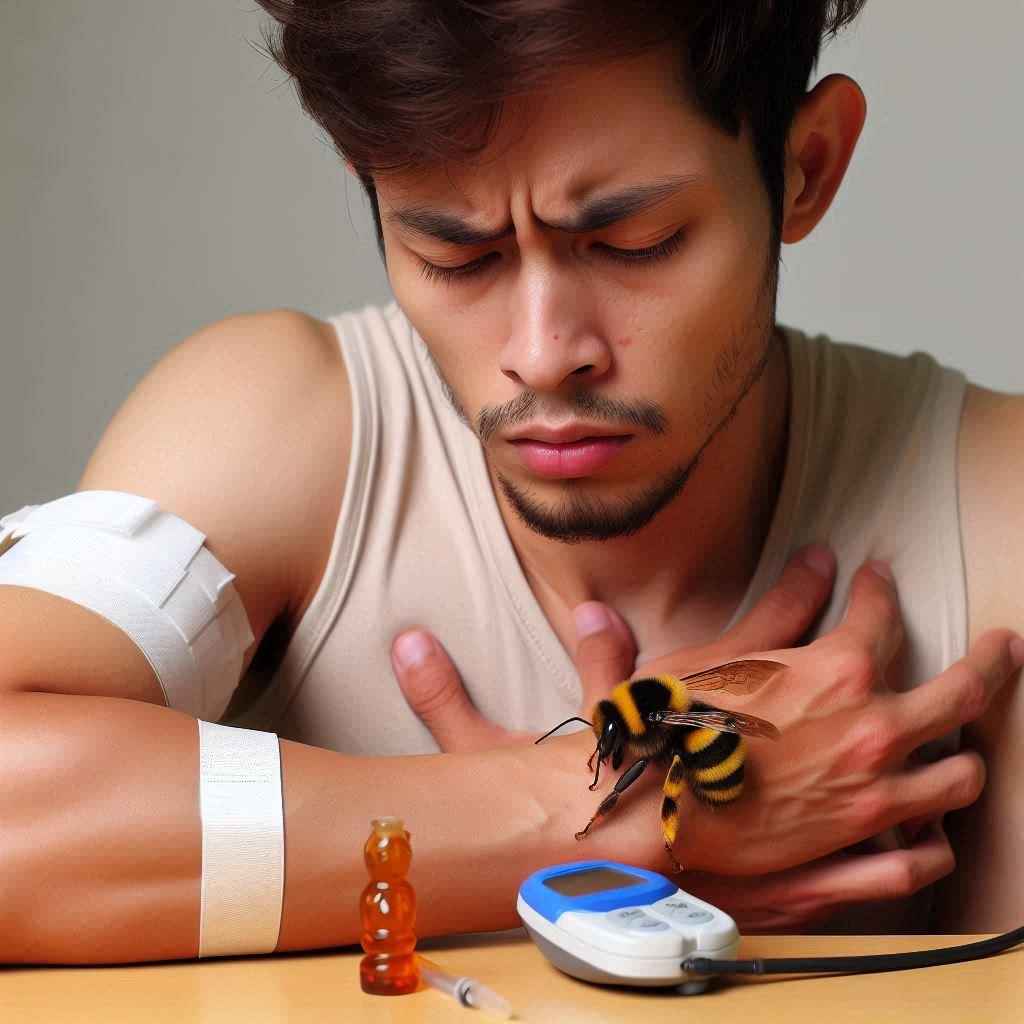
The weakened immune system with impaired blood circulations especially to proximities makes the diabetics more vulnerable to infections after a bee sting. While the high blood sugar level further hampers the body’s ability to fight off bacteria and opportunistic microorganisms. The infected diabetic person should look for signs like redness, swelling, warmth, pus, fever, or chills because early detection is crucial to prevent the spreading of infection further.
1.2 Allergic Responses:

Allergic reaction to bee venom is the most serious concern which should be carefully examined. The reaction may be mild (rashes, swelling, redness) to severe (anaphylaxis, a life-threatening condition that can cause difficulty breathing and shock), nausea, and diarrhea. If you experience or find any of these signs call medical attention immediately.
1.3 Blood Sugar Fluctuations:
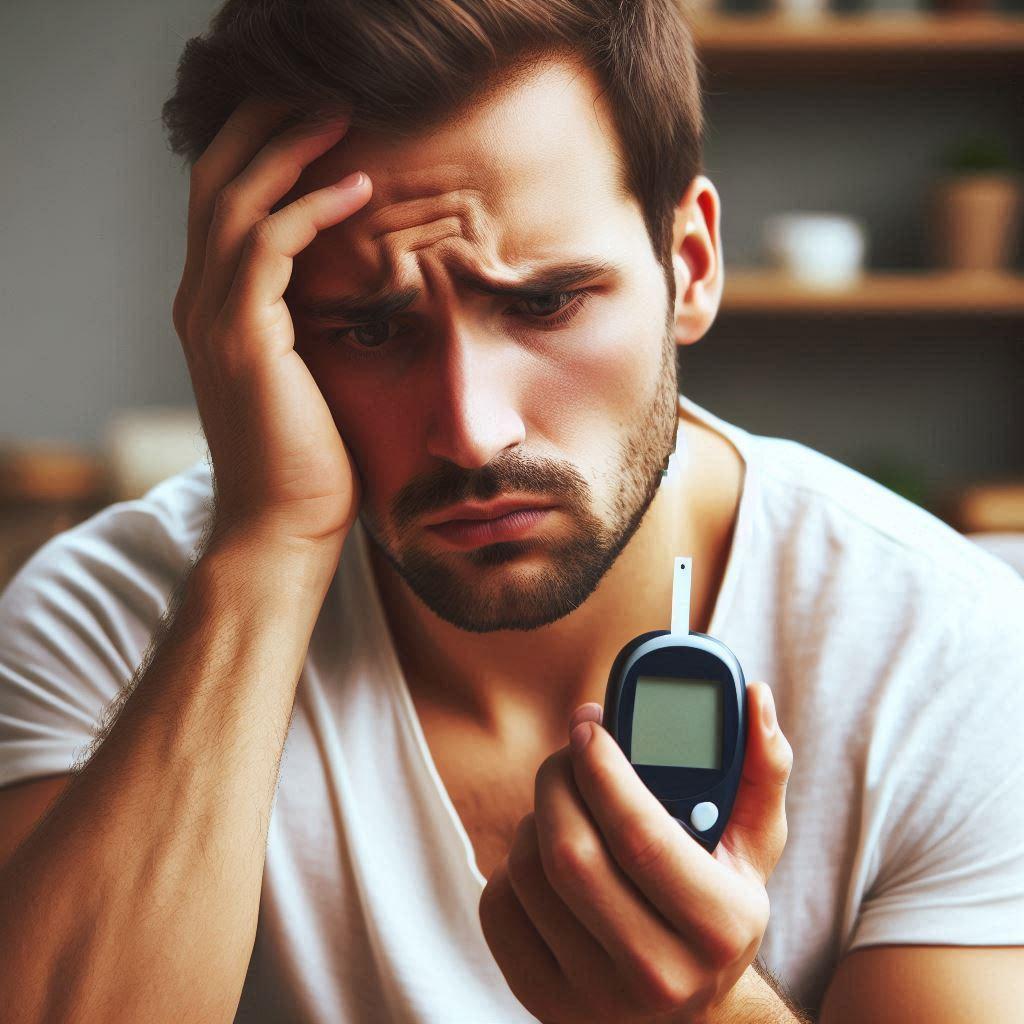
The bee venom can affect the blood sugar level due to stress, fear, and inflammation caused by sting, or even the potential insulin-like effects of the venom itself. So after a sting, the diabetics should monitor their blood sugar levels and prepare and adjust their medications or insulin dose as needed according to the doctor’s instructions. Also, it is important to remember that managing stress through relaxation techniques can help regulate blood sugar levels and reduce the harsh effects of sting.
2. Immediate Actions After a Bee Sting:
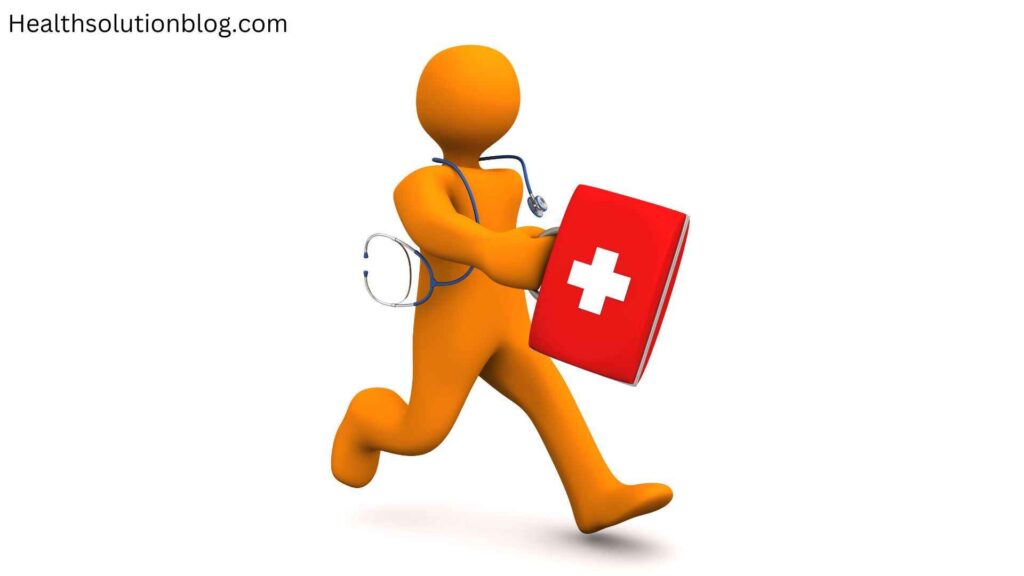
Proper and immediate actions after a bee sting are crucial for appropriate care and to minimize health risks for diabetics. Following are the immediate actions that should be taken after a bee sting.
2.1 Prioritize Safety
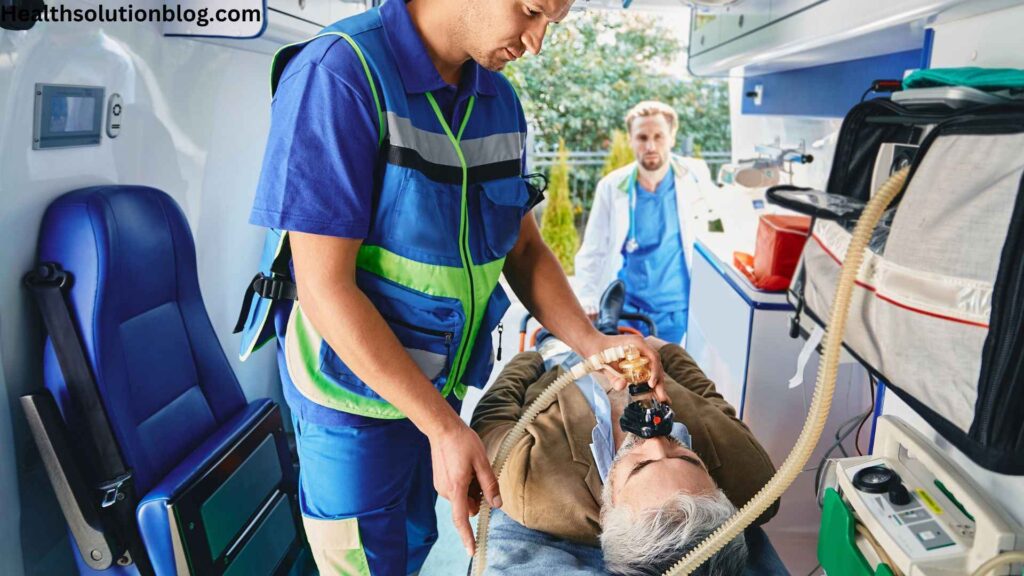
So if you are stung by many bees or experiencing a severe allergic reaction like anaphylaxis, move away from the bee’s area and find medical help. In severe reactions, it is crucial to call emergency services or get to the nearest emergency department by yourself if possible otherwise someone should take you.
2.2 Remove the Stinger:

If you can’t find proper medical attention then try to use blunt objects like credit card edge or back of your fingernail to scrape the stinger sideways out from your skin. Avoid squeezing as it may release more venom harming more.
2.3 Clean and Soothe the Wound
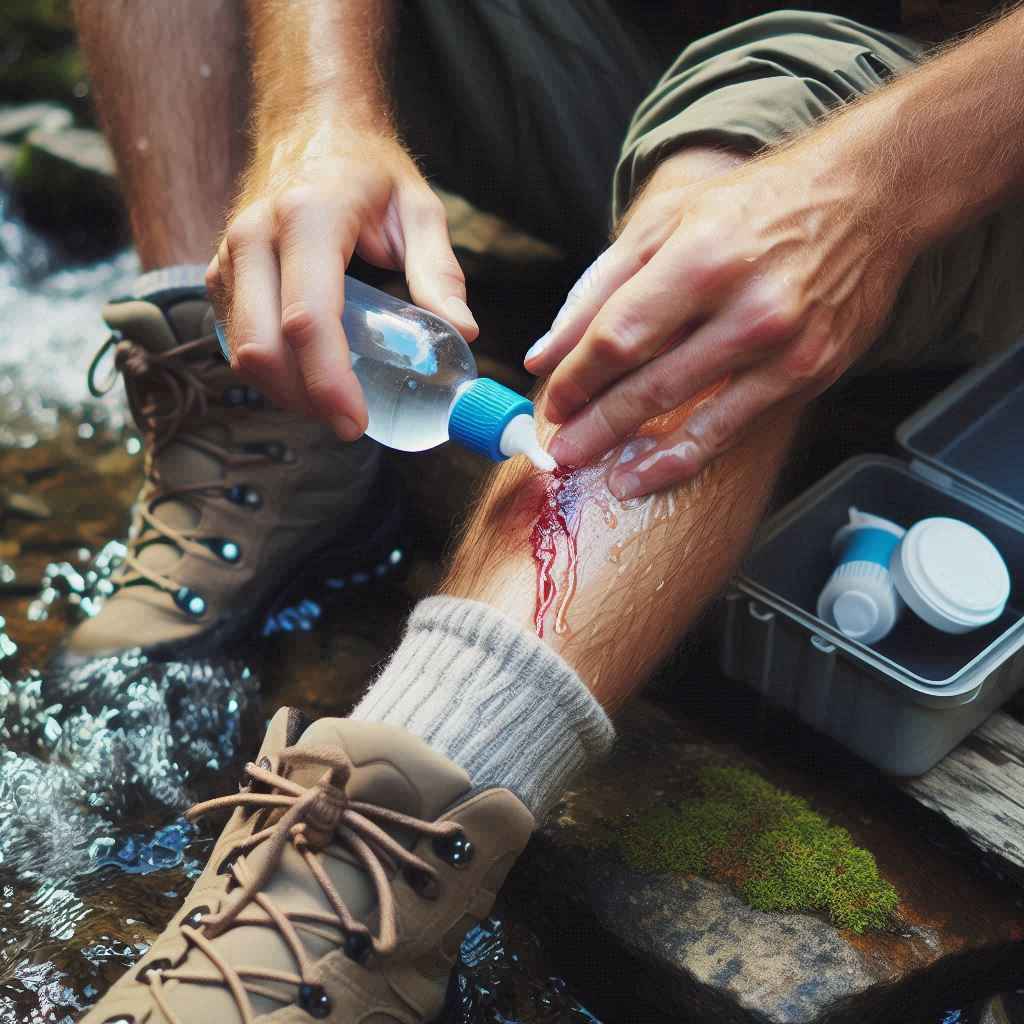
Clean the wound with water to release any remaining venom. You can apply a cool compress to the sting site to reduce the swelling and pain. Also, cover the wound with a bandage for proper care and change it daily or as needed.
2.4 Monitor for Allergic Reactions:

Allergic reactions should be vigilantly monitored even if it is a mild reaction so that it doesn’t go into anaphylaxis. Watch out for the following symptoms.
- Difficulty breathing
- Swelling of the face, tongue, or throat
- Dizziness or lightheadedness
- Rapid heartbeat
- Nausea, vomiting or diarrhea
- Severe skin rash or hives
- Loss of consciousness
If you find any of these symptoms catch out medical assistance immediately.
For diabetics with known allergies, a diabetic kit with an epinephrine auto-injector is necessary. Also, a medical alert bracelet is essential to wear as it informs family and friends about the deteriorating level of blood glucose which can help the person before going into a worse condition.
3. Preventive Measures for Diabetics:
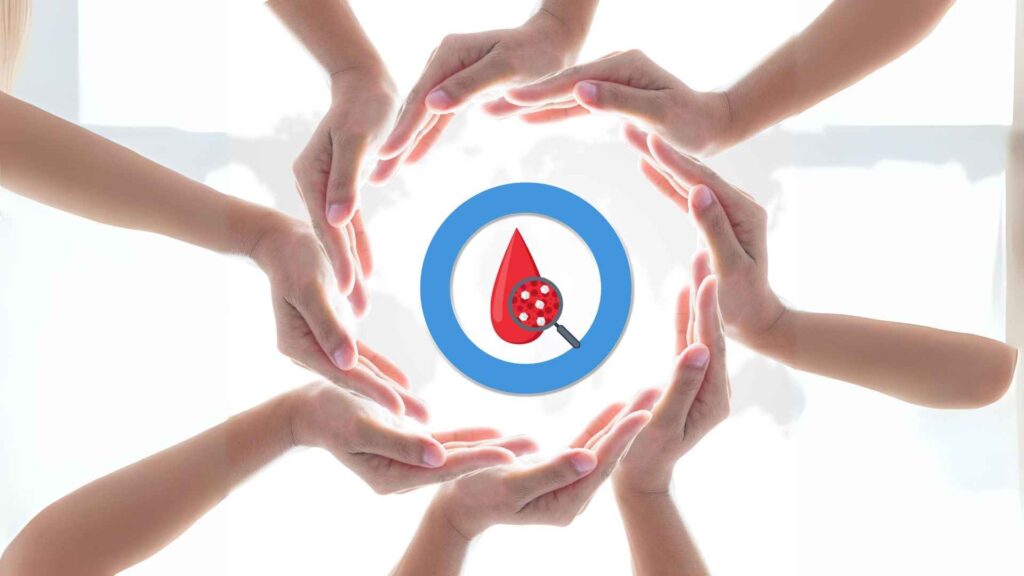
Up to now, it was about after the bee sting. In this section, we will focus on avoiding this condition before you get to it. Following are some of the strategies which can help you to avoid this condition:
3.1 Protective Strategies:
Avoiding bees and their habitat can prevent bee stings. Following are some of the precautions.
- Bees are attracted by sweet scents so be careful while using perfumes, and lotions when outdoors.
- Bright and dark colors also attract bees so avoid wearing dark colored clothing. Also, wear long-sleeved clothing and closed shoes while outdoors. Make sure you breathe in your shoes for some time when wearing closed shoes, especially in summer as it may cause certain foot conditions.
- Avoid carrying sugary food and drinks as bees are attracted by sugar.
- Cover food and drinks while outdoors to avoid bee contact.
- After usage, clean the cans and jars thoroughly to prevent bee contact as the smell of bees is strong.
- Avoid barefoot walking on grass or flowers as bees may be hiding or collecting nectar.
3.2 Be Aware of Surroundings
Stay alert about your surroundings, especially gardens, brighten flowering and plants, or garbage cans. Avoid beehives or nests. To make your hiking, outdoor activities, and tour tension-free take a round in the area to check for bee hives or bee nests. However, if you see a bee approaching you, do not run and stay calm and avoid swatting it instead gently blow it or use a paper or cloth to brush away the bee without touching your bare hands.
3.3 Carry Supplies:
In general, the first aid kit is necessary while hiking or outdoor activities for normal people but it become more important for diabetics to prevent the sting by equipping the following tools and information.
- A first-aid kit that consists of items like antiseptic cream or ointment, pain relievers, sterile bandages, ice packs, and antihistamines to cure bee stings and prevent infection.
- Carry a glucagon kit and blood sugar monitor to check and manage their blood sugar level in case of a sting as the sting may fluctuate blood glucose level. PDD has shared his experience of how his blood sugar rises and falls even days after the bee sting.
- Should carry an epinephrine auto-injector (EpiPen) and learn how to use it in emergencies, and wear a medical alert bracelet or necklace that identifies your allergy and informs friends and family or health care provider about your allergy.
3.4 Identify Bee Types and Habitats (Optional):
Knowing the different types of bees and their habitats can be another tool for avoiding stings. Here’s a brief overview of some common stinging insects:
3.4.1 Honeybees:

Honeybees are generally found near gardens and flowers because they are attracted by the bright colors of flowers in search of nectar. Honeybees are generally not aggressive until their hive is bothered and they sting once but their stinger continuously releases venom until in the skin.
3.4.2 Bumblebees:

These fuzzy and round bees are also found near flowers and fields. Bumblebees are less likely to sting than honeybees but can sting with their barbed stinger multiple times.
3.4.3 Wasps
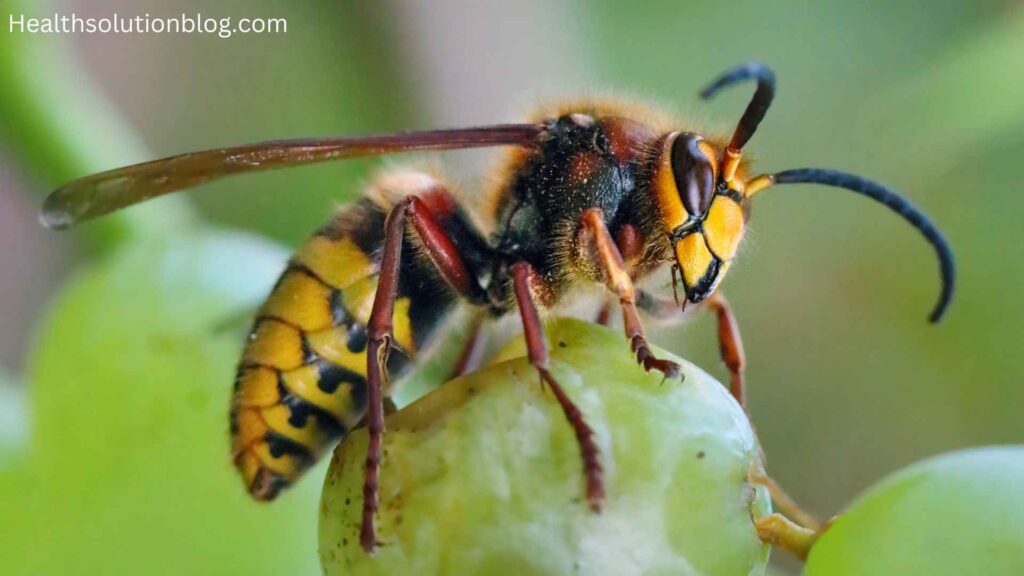
Wasps include yellow jackets and hornets and are the most aggressive than other bees according to some reports because they can sting repeatedly without being provoked. They are attracted to sugary drinks, food scraps, and garbage.
3.4.4 Hornets
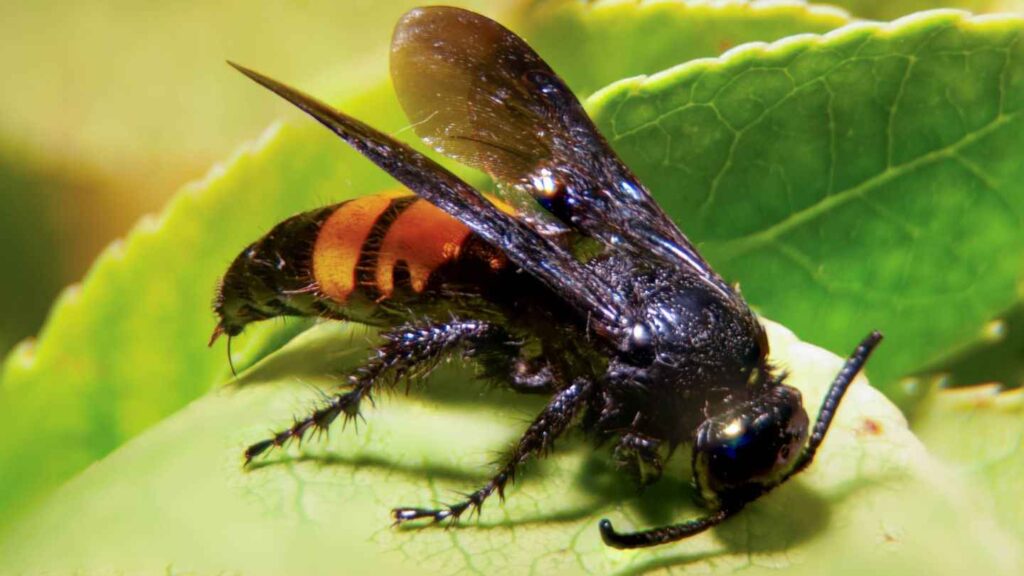
While some think that hornets are the most aggressive and it is a type of wasp. These are the largest wasps that are found near trees and buildings. Hornets can deliver a painful sting.
So following the above preventive measures can greatly help you to avoid bee stings. Remember, even with knowledge staying alert in their habitat is the most effective preventive measure for diabetics.
Conclusion/Summary:
So you now probably got the answer to the question “What happens if a diabetic gets stung by a bee?” The bee sting is an obvious concern for diabetics as the diabetics are already in the pain of blood sugar control and wound healing. In this article, we have explored how to manage the bee stings, including:
- Understanding diabetic reactions i.e. infection risks, allergic reactions, and blood sugar fluctuations.
- The immediate actions after a bee sting i.e. removing the stinger, wound cleaning, watch for anaphylactic reaction.
- Applying preventive measures like protective strategies, surroundings awareness, and carrying necessary supplies.
So being aware of the risks and taking precautions, diabetics can enjoy their outdoor activities with little worry about bee stings. Remember to communicate with your doctor about managing bee stings before going for an outdoor activity.
When it comes to bee stings and diabetes, what are some common misconceptions or myths you hear? How do you debunk them?
Feel free to share your insights and personal stories in the comment section below.
FAQs – What happens if a diabetic gets stung by a bee?
How can a bee sting affect the blood sugar level of a diabetic?
Bee venom can fluctuate the blood glucose level of diabetics in different ways depending upon the individual and the severity of the reaction. It may raise the blood glucose level due to stress and inflammation or may drop due to the insulin-like effect. So one must monitor one’s blood glucose level after a sting and adjust medications and insulin as needed.
I have diabetes. Am I more likely to get stung by a bee?
There is no scientific proof that diabetic people are more likely to be stung by bees.
What should I do if I get stung by a bee and have diabetes?
1. In case of non-availability of medical care, first, remove the stinger with the back of the nail or credit/debit card without squeezing the stinger.
2. Clean the wound with water and apply an ointment or antiseptic cream
3. Monitor your blood glucose level and adjust medications according to needs.
4. Watch for anaphylactic reaction, infection, or worsening symptoms.
5. In case of severe symptoms or allergic reactions, seek immediate medical attention. Medical access can be achieved by taking action immediately after a bee sting if far from the access.
What are some myths about bee stings and diabetes?
Myth: Bee venom can cure diabetes.
Myth: Diabetics are more likely to be stung by bees.
Myth: Certain home remedies are effective for treating bee stings in diabetics.
What can I do to prevent bee stings if I have diabetes?
• Bees are attracted to perfumes, sweet scents, and exposed skin so take care of these factors while near bees.
• Wear light-colored clothing while outdoors and also opt for closed shoes to avoid contact.
• Do not disturb beehives or nests because bees use stings as a defense for their hive.
• If you are allergic then carry an epinephrine auto-injector in case of emergency and also inform others about allergy.
• Stay informed about the local bee activity and seasonal risks.
Are individuals with diabetes at a higher risk of allergic reactions to bee stings?
While diabetes itself is not a risk of allergic reaction to bee stings but one with diabetes should be alert. Any sign of a severe allergic reaction, such as swelling in the sting site, difficulty in breathing, dizziness, lightheadedness, nausea, vomiting, or diarrhea should be treated as a medical emergency and immediate medical attention should be sought.
Should I carry an epinephrine auto-injector (EpiPen) if I have diabetes and a history of severe allergic reactions to bee stings?
If you have a history of severe allergic reactions to bee stings, it’s essential to discuss this with your healthcare provider. They can assess your risk and determine whether carrying an epinephrine auto-injector is necessary for you. Additionally, individuals with diabetes should always be prepared for potential emergencies and carry necessary medical supplies as advised by their healthcare provider.
Sources:
https://www.msn.com/en-us/health/condition/Bee-sting/hp-Bee-sting?source=conditioncdx
https://www.diabetesdaily.com/forum/threads/diabetes-and-bee-stings.30951/
https://link.springer.com/article/10.1007/s40629-022-00199-5
https://www.nature.com/articles/pr1995318.pdf
https://ufdcimages.uflib.ufl.edu/IR/00/00/44/22/00001/AA15900.pdf
https://www.webmd.com/first-aid/bee-and-wasp-stings-treatment
https://www.diabetes.co.uk/diabetes-complications/bee-stings-and-allergic-reactions.html






1 thought on “What happens if a diabetic gets stung by a bee?”
На этом сайте вы сможете найти полезную информацию о терапии депрессии у пожилых людей. Также здесь представлены профилактических мерах, актуальных подходах и советах экспертов.
http://www.kjrclinic.com/myths-and-facts-about-arthritis/